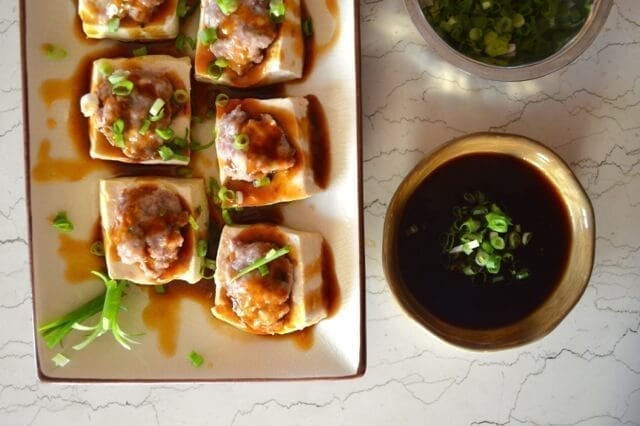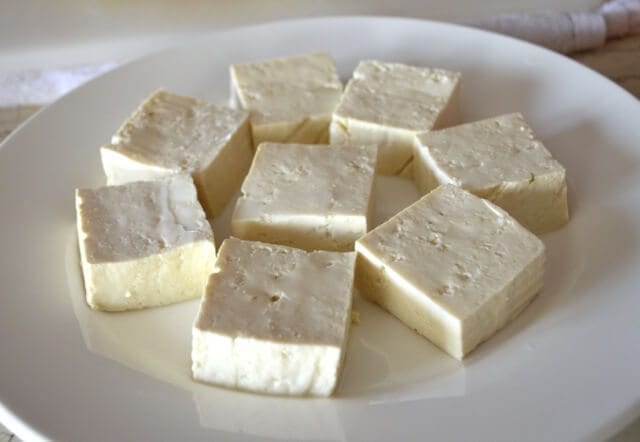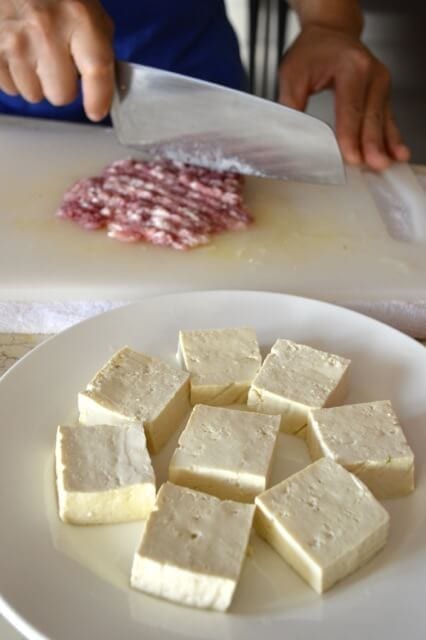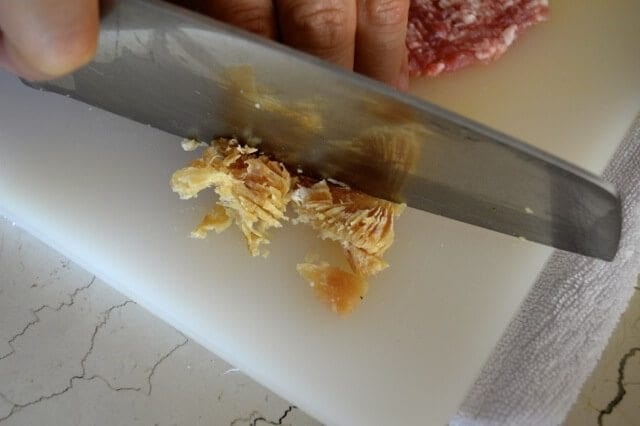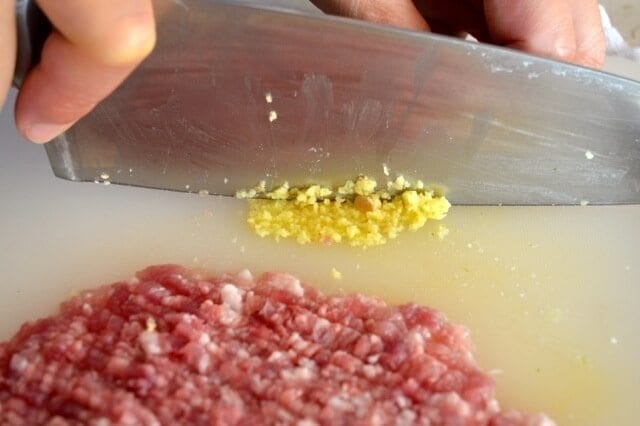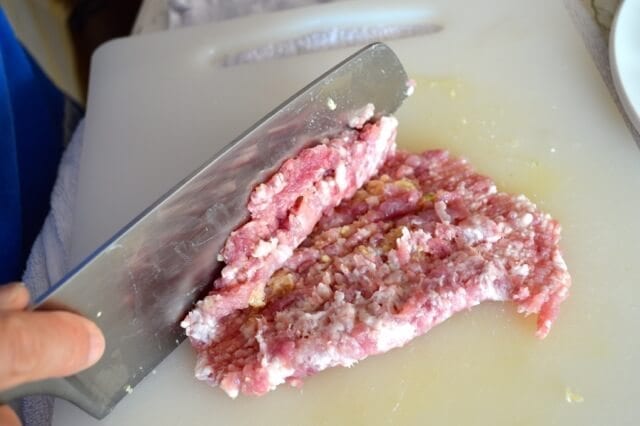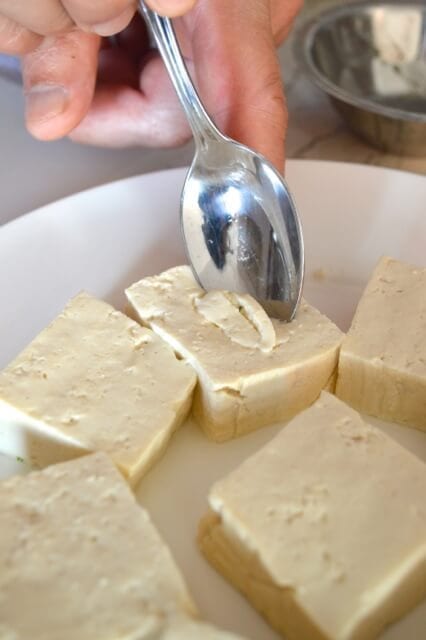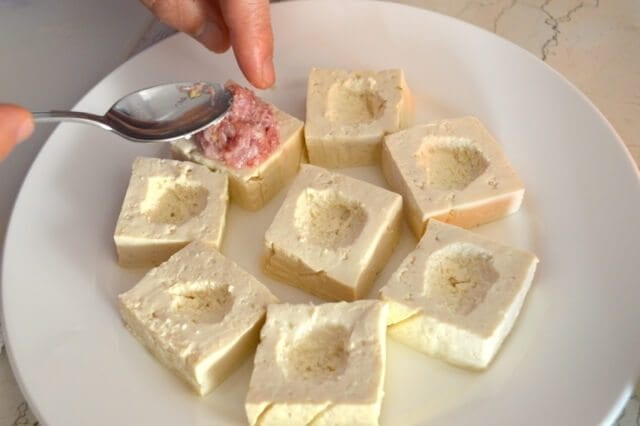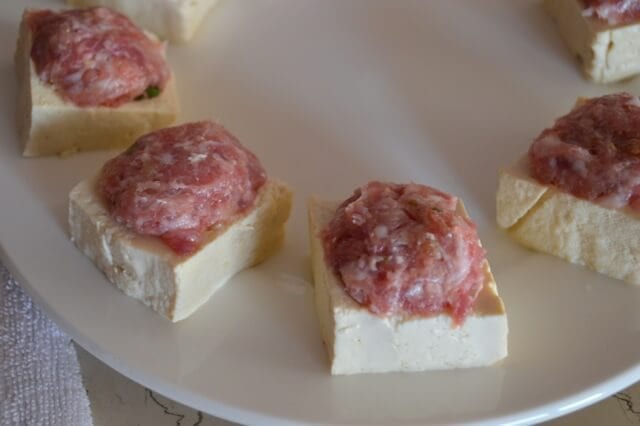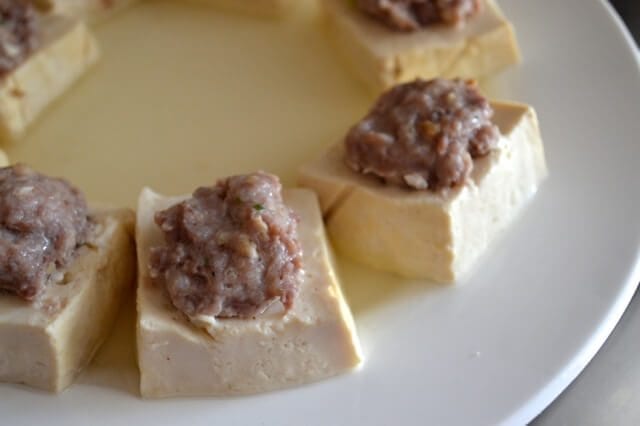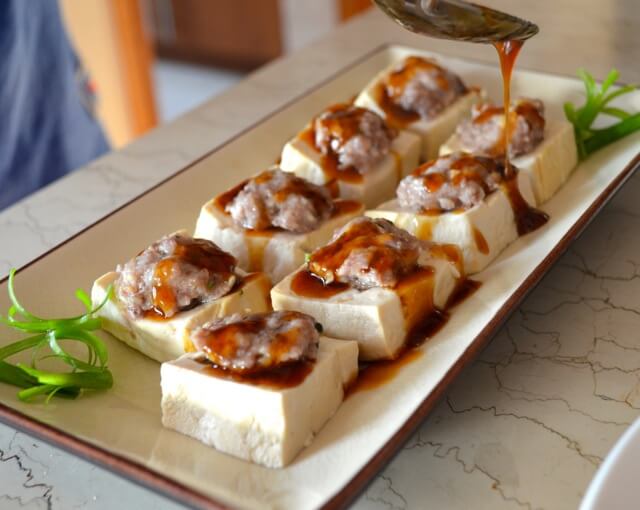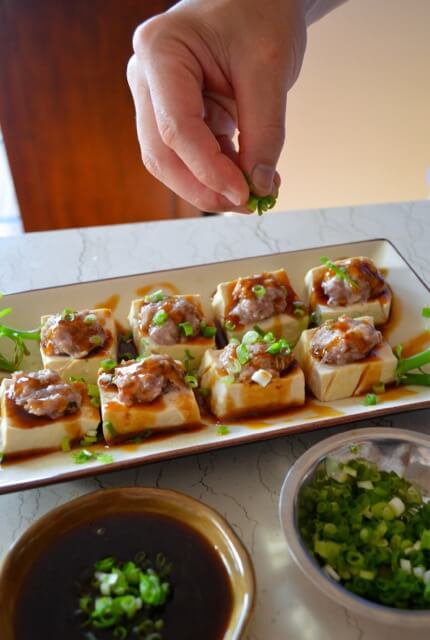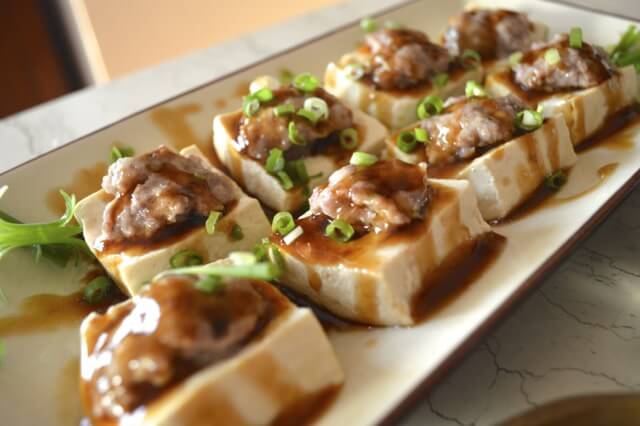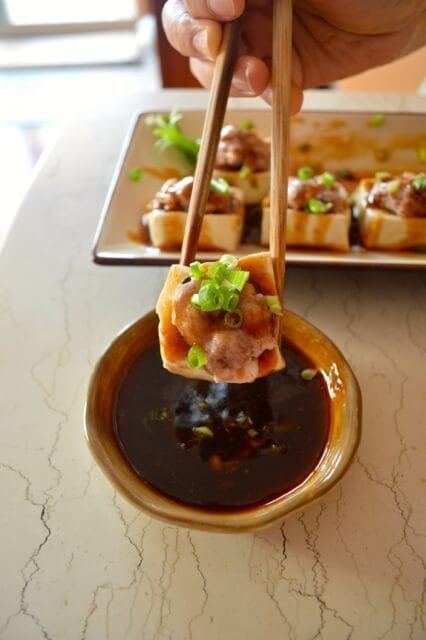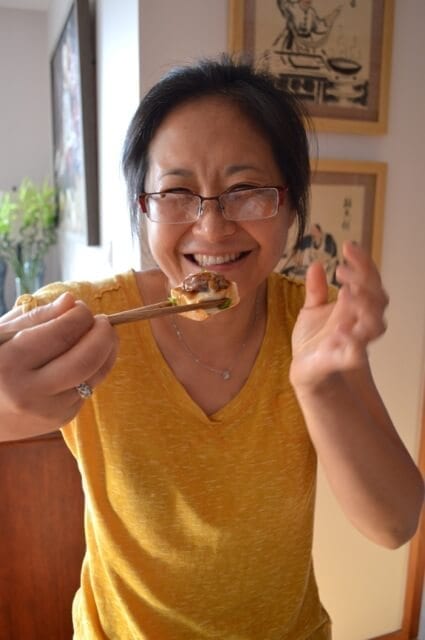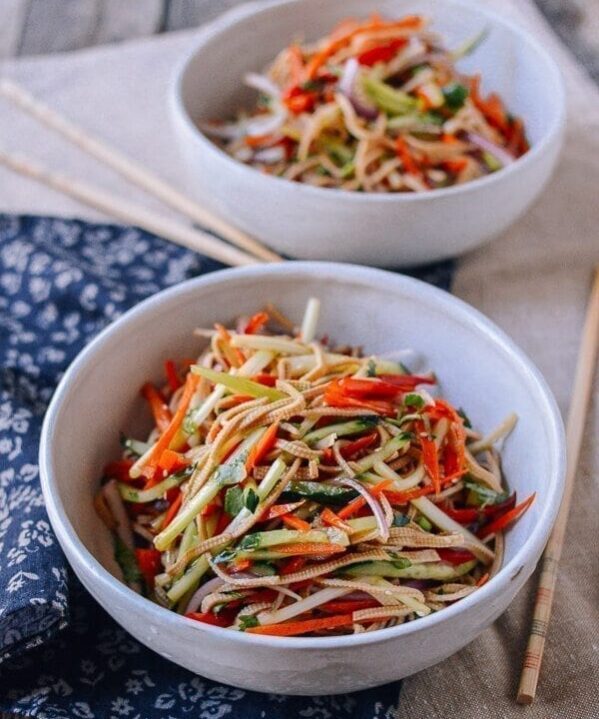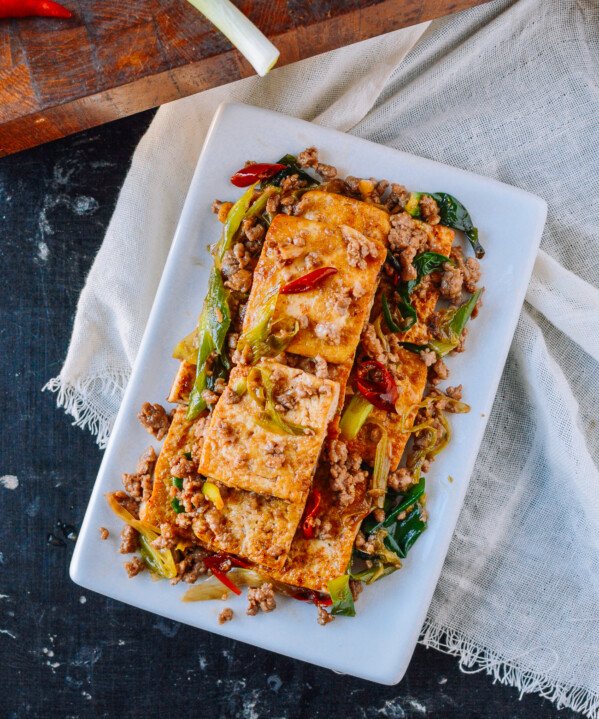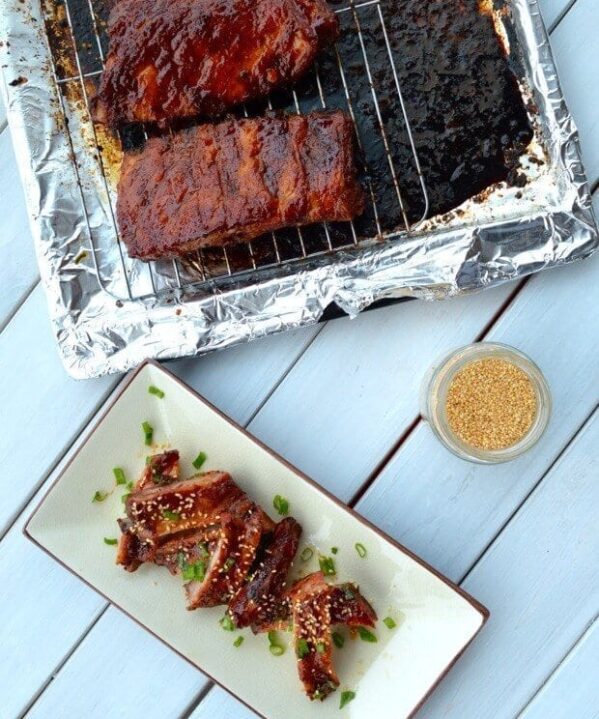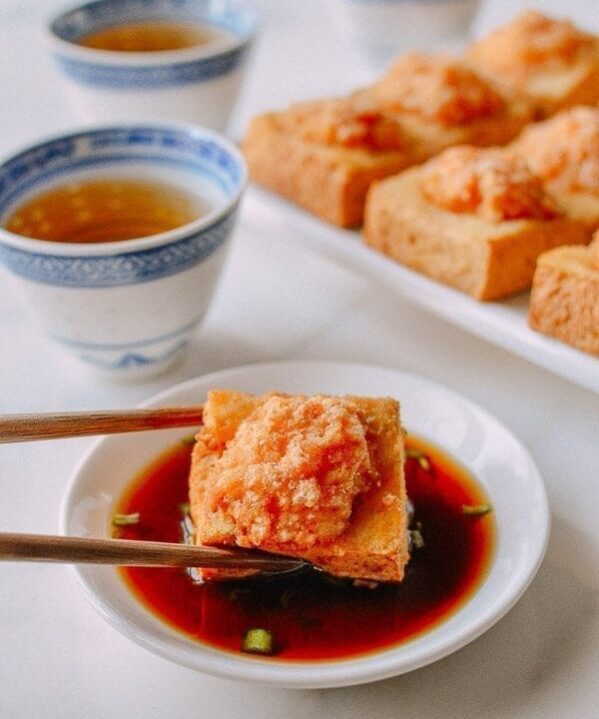My parents grew up in southern China in the Guangdong province as descendants of the Hakka Chinese – Hak-kâ; 客家. When we were young, we spoke the Hakka dialect at home and the more common Cantonese dialect when out in Chinatown or the larger Chinese community.
Each region in China has its own cuisine and local specialties and this Hakka style stuffed tofu is one of them.
We grew up with a lot of traditional southern Chinese dishes, including this Hakka-style Stuffed Tofu. My mom made this dish often, and as I hung around the kitchen quite a bit when she cooked, recipes like this stuffed tofu was stamped into my brain.
Recipe Instructions
Cut the soft tofu or firm tofu into 2-inch squares about 3/4 inch thick and set aside.
Chop the ground pork on the cutting board until it is very finely minced.
You can get the salted fish at the Chinese grocery store. They function similarly to anchovies…giving the dish a savory, nutty, salty flavor.
If you choose to use, it, remove the skin. Try to resist the urge to fling it across the room when the smell hits your nose.
It’s like anchovies in Caesar salad dressing…it gives it that little something extra, but you can’t really taste the fishiness in the end.
Then mince it up.
Mince the ginger…
And then pile the ginger and the minced fish on top of the pork. Chop it all up together.
Scoop out about 1 teaspoon of tofu from each piece to make room for the meat, and place the excess tofu in a bowl with the pork.
Add the Shaoxing wine, a pinch of fresh ground white pepper, and salt to the meat mixture. Mix well. Stuff the meat into the tofu pieces…
And place a steamer rack in the bottom of your wok. Fill the wok up with water, and place the plate on the rack. You can also use a metal steamer if you have one. See our post on how to set up a steamer if you’re not familiar with steaming foods in Chinese cooking.
Bring the water in your steamer setup to a simmer and steam the plate of tofu for about 10 minutes.
While the tofu is steaming, mix 1 tbsp of cornstarch with 1 tbsp of water and set aside. Cut 4 to 6 pieces of the scallions about 3 inches long, and cut lengthwise slits on both ends. Put in a bowl of ice water. The ends curl up nicely and can be used as a garnish. Dice the rest of the scallions and set aside.
When the tofu is done, carefully remove the plate. You’ll see liquid at the bottom of the plate. Pour this liquid back into the wok and add more water if needed to make about a quarter cup of sauce.
Heat the liquid to a simmer and add the oyster sauce and dark soy sauce or dark mushroom soy sauce. Season with a pinch of salt and some more white pepper, and add the cornstarch slurry. Stir and cook the sauce until it’s thick enough to coat the back of a spoon.
Plate the tofu, pour the sauce over it, and garnish with the scallions.
Serve your Hakka Style Chinese stuffed tofu as an appetizer, dim sum or main dish with rice!
It’s a great presentation to a traditional dish. I know Kaitlin will like this dish when we cook it back in New Jersey, but more amazing is that the slightly fish-averse Sarah gave it her approval!
Hakka Style Chinese Stuffed Tofu
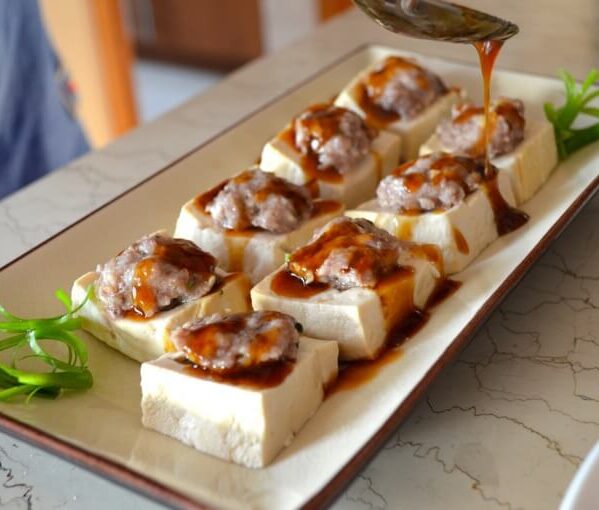
Ingredients
- 1 pound firm tofu (450g)
- 3 oz. ground pork (85g)
- 1 oz. salted fish (optional, or substitute 4 small anchovy filets)
- 1 teaspoon fresh ginger (minced)
- 2 teaspoons Shaoxing wine
- 1/8 teaspoon white pepper
- 1/4 teaspoon salt
- 1 scallion
- 1 tablespoon oyster sauce
- 1 teaspoon dark soy sauce
- 1 tablespoon cornstarch
Instructions
- Mince the ground pork and ginger together. Remove the skin from the salted fish and mince it up with the pork and ginger until very well-combined.
- Cut tofu into 2-inch squares about 3/4-inch thick. Scoop out about 1 teaspoon of tofu from each piece to make room for the meat. In a bowl, stir the excess tofu in with the pork. Add the wine, a pinch of fresh ground white pepper, and salt to the meat mixture. Mix well.
- Divide the meat among the tofu pieces. Steam the plate of tofu in a wok or steamer for about 10 minutes.
- While the tofu is steaming, mix 1 tbsp of cornstarch with 1 tbsp of water and set aside. Cut 4 to 6 pieces of the scallion about 3 inches long, and cut lengthwise slits on both ends. Put into a bowl of ice water. The ends curl up nicely and can be used as a garnish. Dice the rest of the scallions and set aside.
- When the tofu is done, carefully remove the plate. Pour any excess liquid back into the wok and add more water if needed to make about a quarter cup of sauce.
- Heat the liquid to a simmer and add the oyster sauce and dark soy. Season with a bit of salt and white pepper, and add the cornstarch slurry. Simmer the sauce until it's thick enough to coat the back of a spoon. Pour the sauce over the tofu and garnish with scallions.
